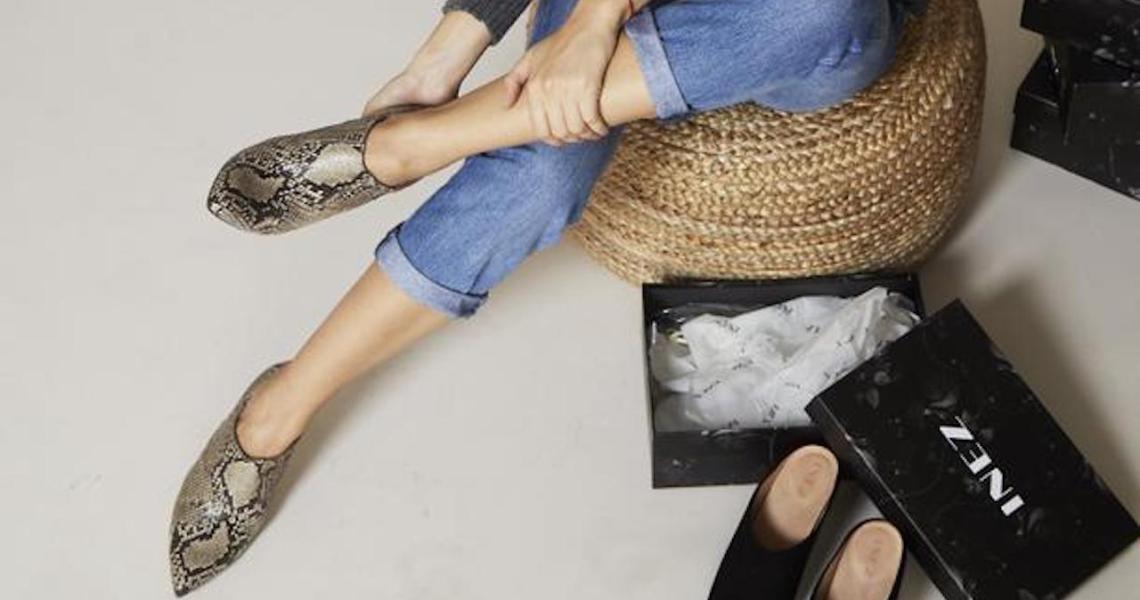The try-at-home model is catching on, but it’s getting more costly for brands.
Luxury footwear brand Inez is using a try-at-home program allowing buyers to purchase one pair of shoes but try two different size variations, and send back one pair within 14 days at no extra charge. The program, which has been part of Inez’s strategy since its launch in 2016, works to get ahead of returns related to product size and fit.
The motivation for Inez’s try-at-home initiative was founder Tony Musso’s market research and firsthand experience. Before launching the line of high-end shoes, which fall in the $200 to $300 price range, Musso spent six months moonlighting as an employee on the floor of a Bloomingdale’s shoe department to find out what shoppers really want when trying on shoes.
“The No. 1 thing I was asked by customers was, ‘Can I try this on in two different sizes?’” he said. “Customers usually wanted their normal size and then a half size smaller or larger, as well. When it comes to shoes — especially heels — size, fit and overall comfort level can vary dramatically. As a brand that largely operates online, we knew we wanted to bring this element of the in-store experience to our customers.”
The home try-on model has been a core element of the Inez business model, and Musso plans to keep it that way despite increasing costs and complexity around shipping and returns. Thus far, a secret to the success of the program has been the in-house management of order fulfillment. Because the company handles its own fulfillment, it can accurately track inventory and act on production needs to ensure product supply always meets consumer demand.
Increasingly brands are focusing on improving the online return process. Others like denim brand Mott & Bow and Rent the Runway are experimenting with similar offerings in which free backup sizes are included in customers’ clothing orders. But other retailers are going a different route via companies like Returnly, which partners with brands to reduce friction around returns. Returnly’s angle: Revamp the current approach to returns by allowing shoppers to buy again using a credit before shipping an item back. Doing so removes some of the risk (such as product lost in transit) for the buyer.
Industrywide, returns resulted in more than $107 billion in losses last year, attributed to shipping and handling costs, reduced inventory and customer support resources, per Rakuten. Likewise, Shopify found that returns over the 2018 holiday shopping season surged to as much as 50 percent for luxury items. Statista projects that reverse logistics costs will reach $550 billion annually by 2020 and also the recent price increase for USPS postage.
Ad position: web_incontent_pos1
Returnly announced in late January 2019 that it received an $8 million Series A funding round led by Mundi Ventures and The Venture City. As a result of this investment, the company’s partner DTC brands like UntuckIt, Outdoor Voices and Greats will benefit from the post-purchase payments company’s new credit facility, which will finance over $300 million in repurchases made by shoppers within the Returnly network.
For Inez, however, the goal is to elevate the customer experience from within. So far, it’s working. Customer satisfaction surveys around the try-at-home program indicate it’s a winning feature for shoppers, and the brand is on track for 100 percent revenue growth in 2019.
“Our brand is entirely customer-driven when it comes to product and experience,” said Musso. “We’ll continue to lean on customer feedback to both guide our programs and anticipate customer concerns.”




